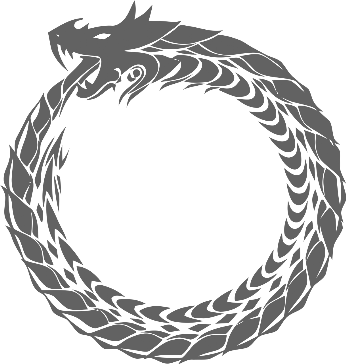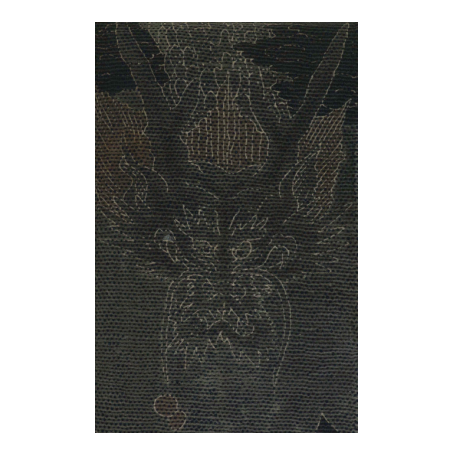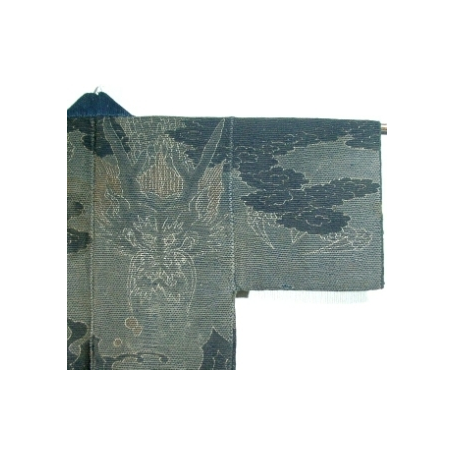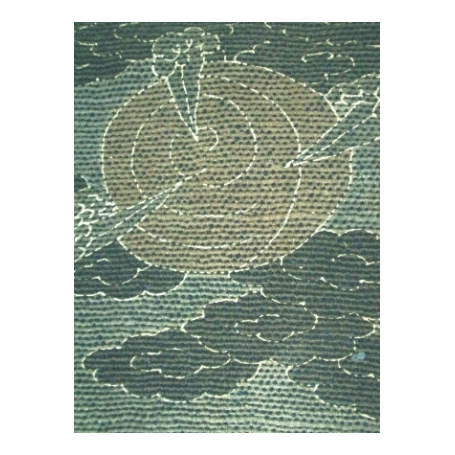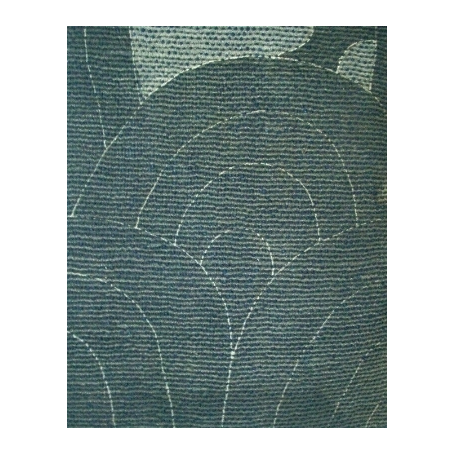
_______________________________________________________________________________________________________________________
LEATHER BANTEN
Japan, late Edo period, cm 105x131.
There is evidence that reversible leather ‘haori’ coats (banten) have been used by samurai and other distinguished people during the whole Edo period (1603-1868). The technique of smoking animal skins was imported into Japan from India, and the designs were obtained by using wax-covered stencils.

Water buffalos skins were at best suited for these coats, that were also very effective in protecting from sparks when fighting fires, and therefore they were sometimes used by high rank firemen. We have to stress, though, that such coats were extremely expensive, and therefore – instead of risking they got damaged when fighting the fire - it is most likely they were used during celebration parades after the fires were extinguished, or when presenting condolence to the victims’ families.
The present banten is an outstanding example of such coats, and it must have been the property of a very high rank samurai, as it has the inside part all-over decorated with the ‘kanji’ character that means ‘leader’. Excellent general condition with very little sign of use. Simply a stunning thing.
